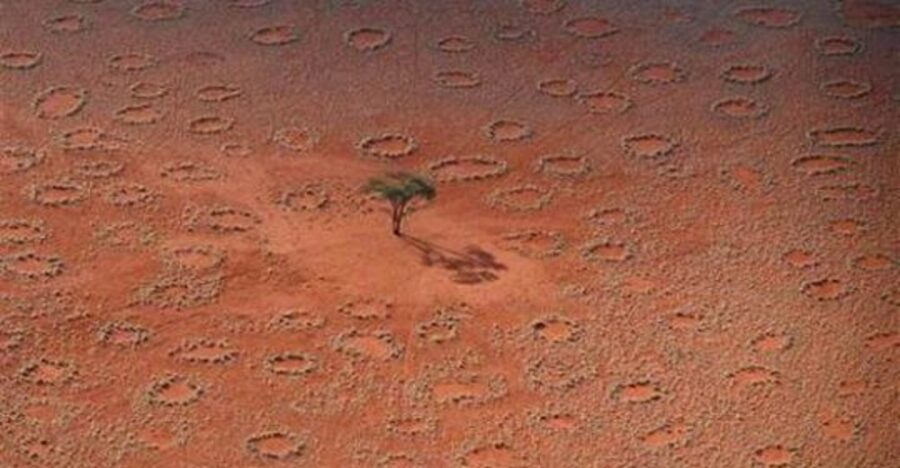Hundreds Of New Crop Circles Found Across The World Are Puzzling Scientists
While the entire world has been transfixed by the idea that alien visitors could be coming to our planet in their high-tech UFOs, a group of scientists has been investigating “fairy circles,” a kind of close cousin to the crop circles that have so often been attributed to alien activity. They were once thought fairly rare and only found in parts of South Africa and Western Australia. However, CNN reports that a team of researchers trained a neural network “to identify vegetation patterns resembling fairy circles in hundreds of new locations across 15 countries on three continents.”
Before we go any further, you probably have a pretty big question: just what the hell are fairy circles, anyway? This term refers to discs of dirt that are clustered closely to each other in patterns across patches of barren land. The circles themselves are very easy to identify, but science has struggled to explain exactly where they actually come from.
Mysterious “fairy circles,” once believed isolated to South Africa and Australia, are now being discovered in many new locations.
Previously, sightings of these fairy circles were contained to the Namib Desert in Southern Africa as well as various parts of Western Australia. However, the team behind this groundbreaking survey published recently in the journal Proceedings of the National Academy of Sciences guessed (quite correctly, at that) that they could make creative use of modern technology to find more of these circles and discover more about this strange phenomenon.

To that end, the researchers trained a neural network to gather more information on these fairy circles. They fed the network more than 15,000 images of existing circles that were previously discovered in Africa and Australia.
Unfortunately, finding more of these fairy circle locations hasn’t brought us much closer to learning more about what causes this strange phenomenon in the first place.
This helped the network learn how to identify the fairy circles, and the team then tasked their AI to use what it had learned to investigate potential fairy circles in satellite imagery of over 575,000 plots of land from all around the world.
Ultimately, fairy circles serve as a very keen reminder that even as we prepare to explore distant planets such as Mars and Jupiter, there are plenty of awesome mysteries to figure out right here on planet Earth.
The AI did a surprisingly good job, though the researchers made sure to double-check its findings and discount any false positives. After doing so, they discovered a whopping 263 dryland locations that seemingly had the same kinds of fairy circles that were observed in the previous locations. The new fairy circle findings were primarily located in Southwest Australia, Midwestern Asia, and assorted spots throughout Africa.
Unfortunately, finding more of these fairy circle locations hasn’t brought us much closer to learning more about what causes this strange phenomenon in the first place. For example, they tend to appear in dry areas and usually have a positive effect on the local ecosystem by helping defend the area against both floods and droughts.
But the scientific community’s best guesses as to fairy circle causes involve them being caused by climate conditions or (and this is especially true in Australia) being caused by termites.
Ultimately, fairy circles serve as a very keen reminder that even as we prepare to explore distant planets such as Mars and Jupiter, there are plenty of awesome mysteries to figure out right here on planet Earth.
Getting to the bottom of these mysteries helps give our lives meaning and helps future generations learn more about the natural world. However, if these scientists later discover that fairies and aliens are tag-teaming to prank us all with strange circles, we’ll throw in the towel and catch the next rocket out of here.












